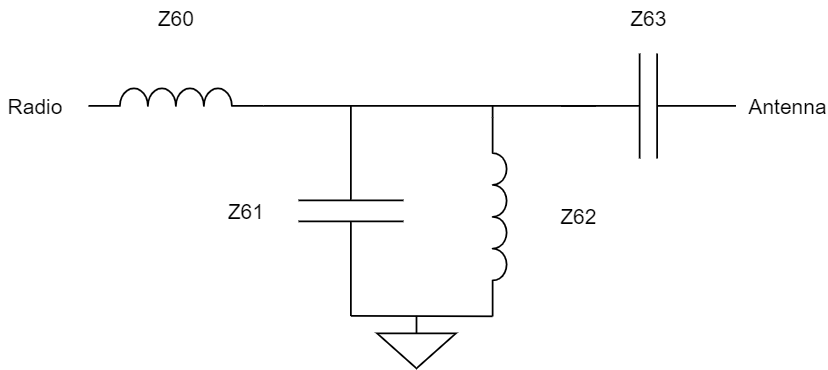SWRA730 February 2022 CC1311P3 , CC1311R3 , CC1312R , CC1312R7 , CC1314R10 , CC1352P , CC1352P7 , CC1352R , CC1354P10 , CC1354R10
- Trademarks
- Acronyms
- 1Description of the PCB Antenna
- 2Test Setup
- 3Unmatched Results
- 4Single-Band Matching and Result
-
5Dual Band Matching and Results
- 5.1 433-MHz and 2440-MHz Smith Chart, SWR, Bandwidth, and Efficiency
- 5.2 470-MHz and 2440-MHz Smith Chart, SWR, Bandwidth and Efficiency
- 5.3 490 MHz and 2440 MHz Smith Chart, SWR, Bandwidth and Efficiency
- 5.4 510-MHz and 2440-MHz Smith Chart, SWR, Bandwidth, and Efficiency
- 5.5 868/915 and 2440-MHz Smith Chart, SWR, Bandwidth, and Efficiency
- 6Summary - Bill of Materials and Results
- 7Conclusion
- 8References
1.2 Matching Network
TI advises users to include an antenna matching network in order to tune and reduce the mismatch losses of the antenna. The geometry of the ground plane affects the impedance of the antenna. The antenna matching network can be used to compensate for detuning caused by encapsulation and other objects in close vicinity of the antenna. The type of antenna matching network depends on the mode of the antenna.
Recommend to use a pi-matching network for single-band mode at the feed point of the antenna. For further information on impedance matching and impedance measurements, see AN058. However, the antenna which is the subject of this app note is a dual-band antenna, designed to simultaneously support 433, 470–510, or 868/915/920-MHz (low-band) and 2.4-GHz (high-band) bands. Therefore, the pi-match is not a recommended solution and instead a LC, CL match network as shown in Figure 1-2 is recommended. This is also the matching network implemented on the LAUNCHXL-CC1352P-4 which is used for testing in this application note.
The LC (Z60 and Z61) part matches the high-band and CL (Z62 and Z63) matches the low-band.
For single-band operations, no 2.4-GHz resonance, Z60 can be replaced with 0 ohm and Z61 left as DNM. Z62 and Z63 can be both an inductor or capacitor in order to match the impedance to 50 ohm.
 Figure 1-2 LC, CL Match Network for Dual-Band Operations.
Figure 1-2 LC, CL Match Network for Dual-Band Operations.